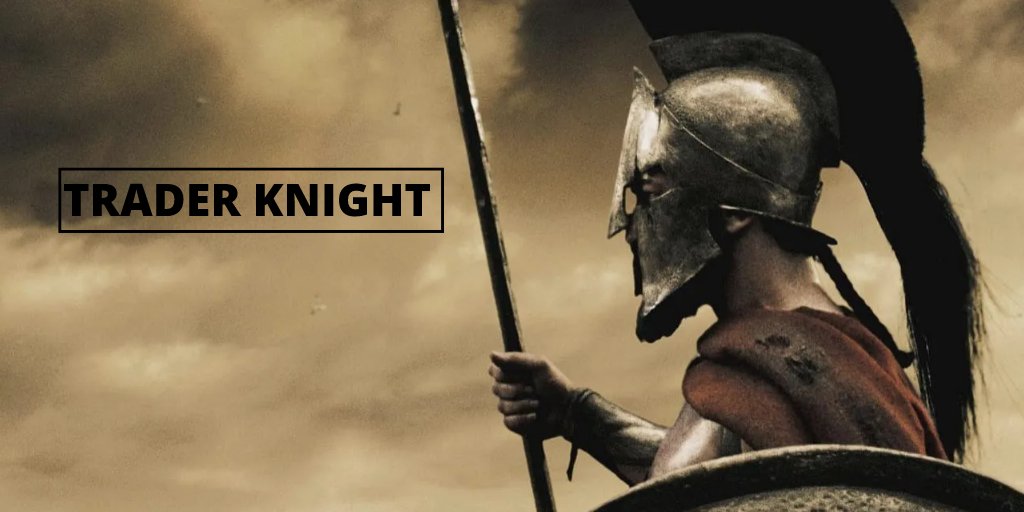A process requires an edge which is simply a statistical advantage you have over other players. A strong psychological state can be considered a bonus edge.
A COMPLETE BREAKDOWN OF MY MOMENTUM DAY TRADING PROCESS.
[THREAD]
A process requires an edge which is simply a statistical advantage you have over other players. A strong psychological state can be considered a bonus edge.
1) Knowledge and idea generation
2) Method and trade execution
3) Risk management and mindset
Each element is necessary and it builds a solid foundation in your trading process.
These factors make up the trading trinity.
In PM, I look for:
- Top gainers (40%+)
- Notable volume on gappers
- News or catalysts (to justify gap)
- Float (<50M)
- Market cap (<500M)
- Range (check daily)
- Price (<25)
- Stock personality (check daily)
- Filings (cash on hand and offering potential)
- https://t.co/dGrDjwtOR8
- https://t.co/Vc256oZCre
- https://t.co/AFrA2ebGr6
- https://t.co/N9nDmqz54E
- https://t.co/0aEt36amzx
- https://t.co/K5b5oercFQ
- https://t.co/VogPh4QNHM
- https://t.co/OoMHVH19CX
I hone in on my top 2.
Also, I have any names that have had momentum and held trend in the prior days as back burner watches since they may see continuation.
I want to identify:
- Prior ranges (since I believe stocks will trade in ranges until they breakout/down)
- Key levels from the daily
- PML and PMH
Also, I take note of the trend and the 50 and 200 SMA.
INDICATORS:
- 9 EMA = Red
- 20 EMA = Light Blue
- 50 SMA = Yellow
- 200 SMA = Green
- VWAP = Purple
- Volume Bars
TIME FRAMES:
- 5 Minute
- 1 Minute
- 1 Day

I prefer to dip buy most of the time because breakout trades require a certain market condition.
I try add as close to major key levels as possible for low risk/high reward.

When it comes down to a channel line or key level. I look to see if price respects that level for an entry with risk just beneath.
I don’t breakout add unless the market is hot. I would rather for a breakout and re-test and get my adds there.
I flick between the 1m and 5m and I mainly watch candle bodies.

Seasonal strategies are simply strategies that are high probability given the current market conditions.
*I go through and explain some strategies in my pinned tweet.
I constantly assess sentiment and I always ask myself: “Who’s in control and who’s stuck?”.
This helps me better understand the price action.
I love asymmetrical bets where risk/reward and probability is skewed heavily in my favor.
I have a max pain of 10% on a trade and I will risk <2.5% of my account on a trade.

You can calculate position size by:
Max risk / (Entry price - Stop price) = Position size
I believe these levels to be potential pivot points so I’m really strict at cutting my losses because if I carry on holding then price is likely to flush.
I don’t hold bags!
Either I will:
1) Scale most (50%+) on the first target and move my stop to entry
2) Let the stock work and only scale out small amounts (~10%) at key resistances and ride the trend based on the 20 EMA on the 5m
However, I take note of runners that remain strong and AH movers depending on their action and their close.
I will chart these names when market closes. I keep them on back burner watch the next day.
It’s what I find consistency, repeatability and profitability in.
It works for me but it may not work for you.
You can take this thread as a guideline and adapt it to fit your way of trading.
Ideally, I want an ADR% of 10+ because I’m interested in explosive momentum moves.
Also, you always want to keep an eye on volume. You don’t want volume to fall off a cliff for a trade you’re in.
Keep things simple and be able to do them time and time again with ease.
There’s no need to make things complex and sophisticated when they don’t need to be.
It’s better to have something straightforward where you just need to execute well.
In many ways, my strategy is inspired and derived from their own.
More from Tradingthread
Thanks for reading :)

Pyramiding
A thread on Pyramiding- pic.twitter.com/8EOSSFMZ2w
— Trader knight (@Traderknight007) December 27, 2020
Don't change your trading
"Don't change the trading rules after every trade."
— Trader knight (@Traderknight007) November 29, 2020
If you do change them frequently then this thread is for you.
Let's talk about the law of large numbers and how it benefits traders to be profitable.
[Thread]\U0001f447\U0001f447\U0001f447 pic.twitter.com/pEUr0wH354
Trendlines
A thread on Trend-lines pic.twitter.com/GsLGzl8A3c
— Trader knight (@Traderknight007) January 2, 2021
Scaling in-out
A thread on SCALING IN - OUT METHOD - pic.twitter.com/bJ1N5ZjAiK
— Trader knight (@Traderknight007) January 9, 2021
You May Also Like
These setups I found from the following 4 accounts:
1. @Pathik_Trader
2. @sourabhsiso19
3. @ITRADE191
4. @DillikiBiili
Share for the benefit of everyone.
Here are the setups from @Pathik_Trader Sir first.
1. Open Drive (Intraday Setup explained)
#OpenDrive#intradaySetup
— Pathik (@Pathik_Trader) April 16, 2019
Sharing one high probability trending setup for intraday.
Few conditions needs to be met
1. Opening should be above/below previous day high/low for buy/sell setup.
2. Open=low (for buy)
Open=high (for sell)
(1/n)
Bactesting results of Open Drive
Already explained strategy of #opendrive
— Pathik (@Pathik_Trader) May 27, 2020
Backtested results in 30 stocks and nifty, banknifty.
Success ratio : approx 40-45%
RR average 1:2
Entry as per strategy
Stoploss = Open level
Exit 3:15 PM Or SL
39 months 14 months -ve, 25 +ve
Yearly all 4 years +ve performance. pic.twitter.com/nGqhzMKGVy
2. Two Price Action setups to get good long side trade for intraday.
1. PDC Acts as Support
2. PDH Acts as
So today we will discuss two more price action setups to get good long side trade for intraday.
— Pathik (@Pathik_Trader) June 20, 2020
1. PDC Acts as Support
2. PDH Acts as Support
Example of PDC/PDH Setup given
#nifty
— Pathik (@Pathik_Trader) June 23, 2020
This is how it created long setup by taking support at PDC.
hopefully shared setup on last weekend helped. pic.twitter.com/2mduSUpMn5





















